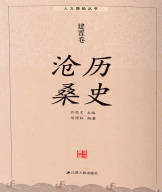
主要责任者: 陈博林
责任方式: 编著
出版者: 江苏人民出版社
出版地: 南京
字数: 1859 千字
页码: 1-308
开本: 16
中图分类号: K295.34
分辑名:建置卷
语种:中
定价:460.00
出版时间:2018-09
丛书多卷书否:是
丛书名:人文赣榆丛书
丛书责任者:许思文 主编
书目简介:本册工具书是人文赣榆丛书之一,共收录170条词条。
| 词条 | 历史沧桑 |
| 类别 | 中文百科知识 |
| 释义 |  主要责任者: 陈博林 责任方式: 编著 出版者: 江苏人民出版社 出版地: 南京 字数: 1859 千字 页码: 1-308 开本: 16 中图分类号: K295.34 分辑名:建置卷 语种:中 定价:460.00 出版时间:2018-09 丛书多卷书否:是 丛书名:人文赣榆丛书 丛书责任者:许思文 主编 书目简介:本册工具书是人文赣榆丛书之一,共收录170条词条。 |
| 随便看 |
开放百科全书收录579518条英语、德语、日语等多语种百科知识,基本涵盖了大多数领域的百科知识,是一部内容自由、开放的电子版国际百科全书。